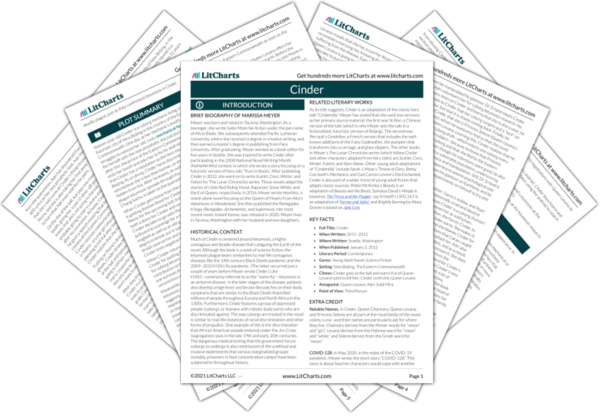Next
Summary
Cinder Study Guide |
Next
Summary
|
Welcome to the LitCharts study guide on Marissa Meyer's Cinder. Created by the original team behind SparkNotes, LitCharts are the world's best literature guides.

Notable Names. In Cinder, Queen Channary, Queen Levana, and Princess Selene are all part of the royal family of the moon colony Luna—and their names are particularly apt for where they live. Channary derives from the Khmer words for “moon” and “girl,” Levana derives from the Hebrew word for “moon” and “white,” and Selene derives from the Greek word for “moon.”
COVID-128. In May 2020, in the midst of the COVID-19 pandemic, Meyer wrote the short story “COVID-128.” This story is about how her characters would cope with another deadly plague, just as they confronted letumosis in Cinder.